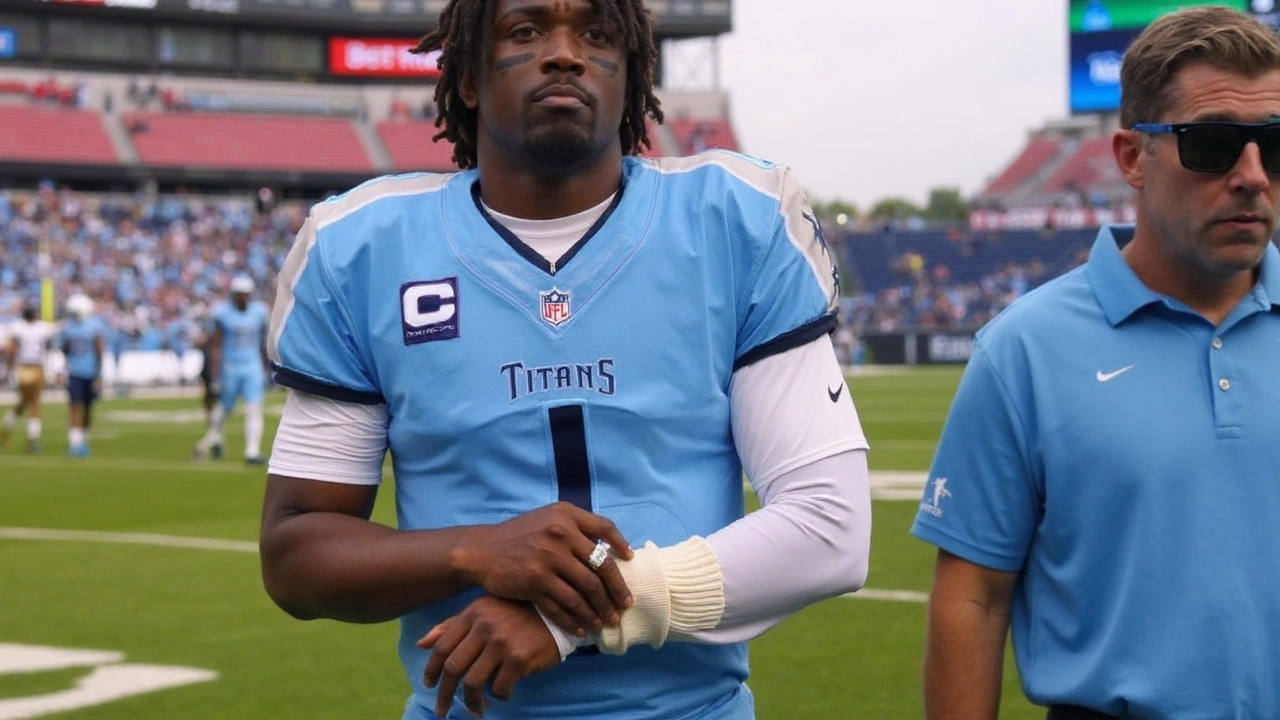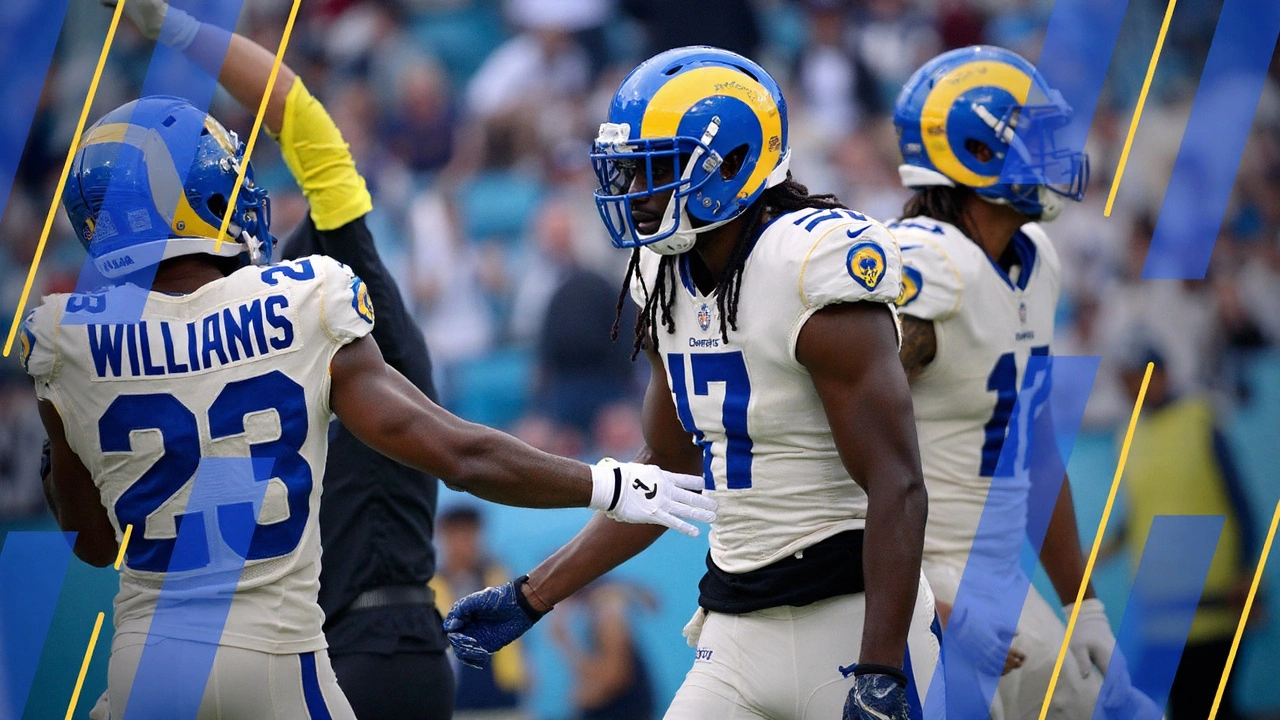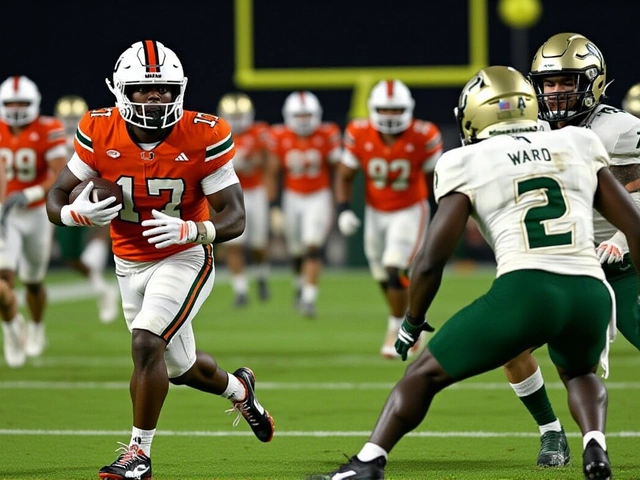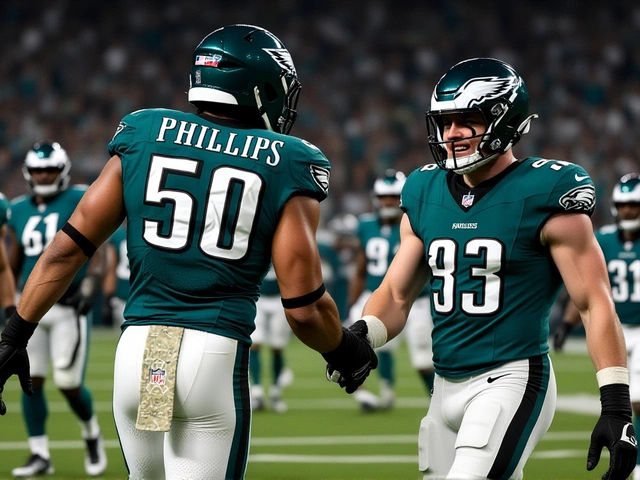The Los Angeles Rams walked out of Nissan Stadium with a 33-19 win and a clear message: their offense has teeth, and their defense can close games. Matthew Stafford steered a calm, calculated performance for 298 yards, Davante Adams scored his first touchdown in blue and gold, and Puka Nacua ripped off a 45-yard dagger that tilted the afternoon in L.A.’s favor. For Tennessee, it was a harsh showing for rookie quarterback Cam Ward, who spent long stretches under pressure and out of rhythm.
Stafford in command, Adams makes his mark, Nacua stretches the field
This was vintage Stafford. He manipulated coverage with his eyes, got the ball out on time, and attacked leverage when the Titans showed man looks. The Rams mixed tempo and motion to force simple answers from the defense, and Stafford took the layups when they appeared. When Tennessee sat back, he layered throws into voids with the kind of touch that turns routine drives into points.
The headline moment belonged to Davante Adams. On his first touchdown as a Ram, he won clean off the line, stacked the corner, and gave Stafford a defined window. It looked like the kind of day-one chemistry that takes most quarterback-receiver tandems weeks to build. Adams wasn’t simply a red-zone attraction, either—his presence changed the spacing, pulling safety help and creating access throws for others.
Nacua delivered the backbreaker. His 45-yard score showcased what has become his trademark: pace off the release, a sharp burst at the breakpoint, and immediate acceleration after the catch. Tennessee struggled to match that speed in space, and the Rams kept finding ways to isolate Nacua against off coverage. Pair that with steady timing routes and you get a passing script that rarely felt rushed.
Credit the Rams’ protection for much of it. The pocket was generally clean, especially on early downs, which let Sean McVay stay on schedule. The play sheet never had to tilt into desperation. Screens, quick outs, and play-action kept the Titans’ rush guessing and gave Stafford a steady diet of high-percentage throws.
Defensively, L.A. brought heat in waves. Outside linebacker Byron Young set the tone with a drive-stalling sack and later punched the ball out on a pressure that halted a promising Tennessee series. The front did an excellent job collapsing edges and squeezing throwing lanes, which sped up Ward’s clock. When the Rams rotated late and showed post-snap movement, Tennessee’s receivers struggled to uncover quickly.

Titans’ rookie growing pains and the long road back
Cam Ward had a tough second half. In one stretch, he completed just 2 of 7 passes for 11 yards, a snapshot of how often the Rams forced him into tight windows and hurried decisions. The Titans’ pass protection leaked at key moments, turning second-and-manageable into third-and-long. That’s a brutal place for a rookie with a defense disguising coverages on the other side.
To their credit, Tennessee tried to steady things with quick game, screens, and a few designed movement throws to get Ward on the edge. It worked in spurts, but sustained rhythm never arrived. The Rams rallied to the ball, tackled well after the catch, and prevented explosives—exactly what you want against a young quarterback still learning NFL timing.
There were bright spots. Running back Tony Pollard popped a few timely gains, and wide receiver Calvin Ridley found pockets in zone to keep chains moving. But Tennessee’s drives kept stalling in scoring range. Too many field goals, not enough touchdowns—that was the difference between hanging around and truly threatening the lead.
Situational football told the story. The Rams won early downs on both sides, which protected their playbook and forced the Titans to chase. Red-zone execution favored L.A., and the one clear takeaway—Young’s forced fumble—short-circuited a Titans push when they could least afford it. Tennessee’s penalties and protection issues compounded the problem by handing Stafford extra possessions and favorable field position.
Zooming out, the Rams look deeper than a year ago. With Adams bending coverages and Nacua stretching the field, Stafford has answers built into nearly every look. The defense, while not flashy snap-to-snap, creates pressure in the moments that matter and tackles cleanly. That combination travels.
For the Titans, this is about development and triage. Protect Ward better. Lean into tempo and defined reads to simplify the picture. Use motion and bunch to free Ridley and create quick wins. And when the game slows down, give Pollard the touches that set up play-action. Brian Callahan’s group has pieces, but they need a cleaner path to consistent explosives.
The scoreboard says comfortable win, but the tape says something clearer: the Rams controlled the structure, forced the Titans into reactive football, and finished drives. In Week 2, that’s the blueprint most teams are still searching for. L.A. already found it.
- Tag Populer
- Los Angeles Rams
- Tennessee Titans
- NFL Week 2
- Matthew Stafford











